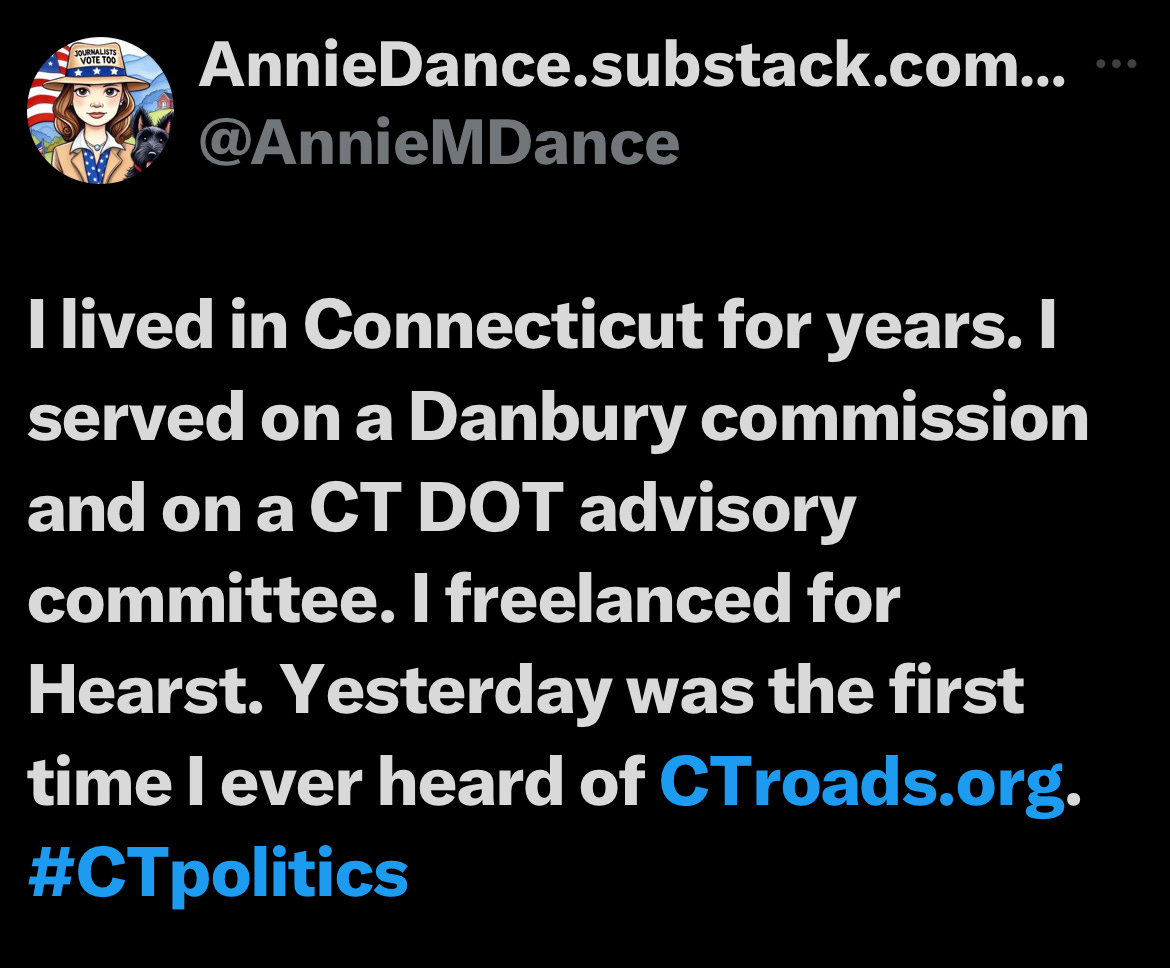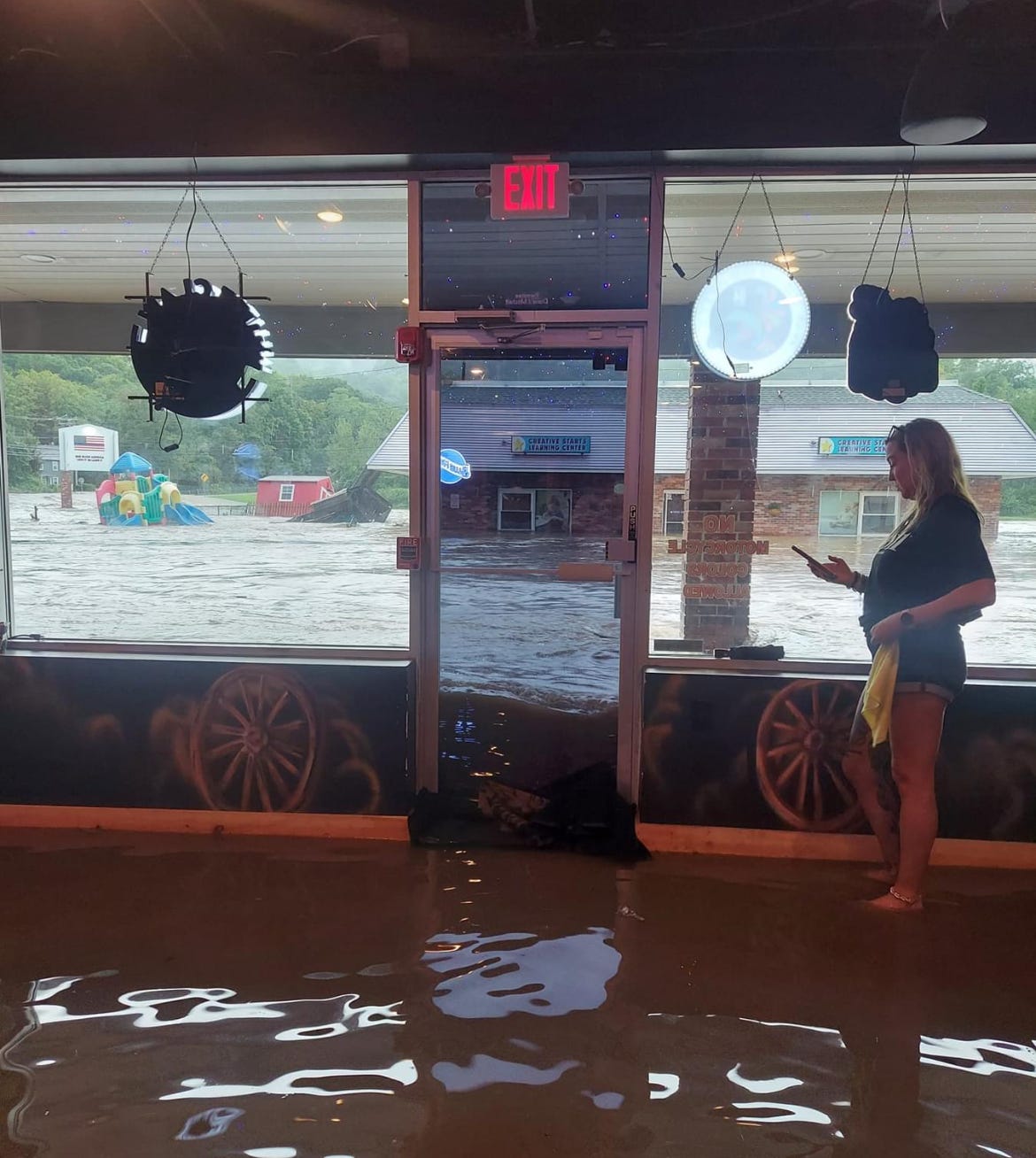Historic flooding: Infrastructure failures and government corruption suspicions emerge
Where did the infrastructure funds go? Connecticut faces questions as critical systems falter in the wake of disaster.

Connecticut experienced some of the most severe flooding in its history yesterday, leaving communities submerged, homes destroyed, and lives uprooted. The catastrophic events have sparked outrage and raised urgent questions about the state's preparedness and the integrity of its critical infrastructure. At least two people are missing and presumed dead from drowning. Numerous people are without power and can’t access their homes due to numerous road closures. Police cars were reportedly underwater in Oxford.
Nearly 50 campers were trapped at a park, they were rescued after several hours. Many police and fire agencies were overwhelmed with calls. Some towns created their own individual states of emergency declarations in the absence of the governor creating one for the state.

Causes of the Flooding
The flooding, driven by unprecedented rainfall and exacerbated by aging infrastructure, overwhelmed rivers and drainage systems across the state. Scientists point to the increasing frequency of extreme weather events as a consequence of climate change, making it clear that Connecticut's infrastructure needs to be more resilient than ever. Despite this, the state's ability to cope with such disasters has proven disastrously inadequate. CT earned a D+ grade for roads, according to the 2022 Connecticut Infrastructure Report Card.
The National Weather Service said, “Flooding of rivers, creeks, streams, and other low-lying and flood-prone locations is occurring after receiving 5 to 10 inches of rain. Several structures are flooded. Numerous roads
remain closed due to flooding. The Still River, Housatonic River,
and Pomperaug River remain in flood stage. At 1137 PM EDT, emergency management is continuing to report ongoing water rescues, several mudslides, numerous washed out roadways and bridges as well as swollen rivers taking place from Central Fairfield County into Northern New Haven County. In addition, emergency management officials are assessing the integrity of several dams in the area.”
Government Failures
At the heart of the issue is a failure of governance. Connecticut residents are now questioning why the state was so unprepared for this heavy rainfall, despite receiving significant federal funding for infrastructure improvements.
In 2021, President Joe Biden, along with Vice President Kamala Harris, announced a major infusion of funds aimed at shoring up critical infrastructure across the country. Connecticut was among the states that benefited from this initiative, with Governor Ned Lamont's administration receiving substantial sums specifically designated for improving flood control measures and updating outdated systems.
However, in the wake of the flooding, it's evident that these funds were either mismanaged or, worse, never reached their intended projects. Communities that were promised protection from events like these are instead grappling with the devastating reality of government failure.
Governor Lamont’s Response
Amid the unfolding disaster, Governor Lamont issued a statement, addressing the severe flooding and the state’s ongoing response efforts. He highlighted the immediate actions taken by the state’s emergency management team, including coordination with local officials and the deployment of search and rescue teams, who he said have helped at least 100 people evacuate unsafe conditions.
Lamont described the storm as “historic” and emphasized the need for residents, particularly in the western portion of Connecticut, to stay home until the flooding recedes. He urged people not to attempt driving through flooded roads and directed them to ctroads.org for real-time updates on road closures. The governor also reminded residents to call 9-1-1 for emergencies and 2-1-1 for non-emergency assistance.
Statement from FirstLight Energy on Stevenson Dam
Amid the extreme rainfall and subsequent flooding, FirstLight Energy stated the Stevenson Dam, located in the lower Housatonic River area at Lake Zoar, is structurally secure and operating as designed and emphasized that it is not in danger of failing. However, they reiterated that the Stevenson Dam is not a flood control facility and cannot hold back water, meaning that whatever flows down the river must be passed through the dam at the same rate.
FirstLight urged residents to obey the instructions of emergency service personnel and avoid approaching the dam and the Housatonic River until the dangerously high flows subside. The company highlighted the risks associated with high water levels and elevated flow rates, which are particularly hazardous in low-lying areas of the lower Housatonic communities. It is categorized as a high-hazard dam.
The company also emphasized its proactive measures, including constant monitoring of United States Geological Survey (USGS) gauges and communication with the National Weather Service River Forecast Center. FirstLight operates its Housatonic River hydroelectric facilities under strict protocols approved by the U.S. Army Corps of Engineers, as required by its Federal Energy Regulatory Commission (FERC) license.
To aid the lower Housatonic community in responding to potential flooding, FirstLight has implemented a flood notification system, providing emergency alerts when flows exceed a certain threshold. This system is crucial for helping residents anticipate and prepare for high flows that could lead to flooding.
Cops & Congress commentary: Corruption Suspicions
In a state often derided as "Corrupticut," suspicions of corruption are now swirling around Governor Lamont's administration. Where did the critical infrastructure funds go? Why were essential flood mitigation projects not completed, or even started, in some areas? The lack of transparency and accountability has fueled widespread speculation that the funds may have been siphoned off or misallocated, leaving Connecticut's vulnerable infrastructure to crumble under pressure.
Where is Senator Chris Murphy, the junior Democrat, in all of this? What has he done or more specifically, not done? He has been completely silent on social media, as of press time. Zero mention of the disastrous flooding and the thousands of people it affected. Murphy faces Republican challenger Matt Corey this fall, a rematch of 2018.
As questions emerge about the chaotic handling of the flood response and infrastructure funds, residents are left to pick up the pieces of their shattered lives. The Lamont administration has been slow to respond to calls for transparency, further eroding public trust.
Where Do We Go From Here?
The path forward for Connecticut is fraught with challenges. Rebuilding will require more than just repairing the physical damage; it will necessitate restoring faith in government and ensuring that future infrastructure projects are completed with integrity and transparency. There is also a pressing need for independent oversight of how federal funds are used, especially in a state with a notorious reputation for corruption.
Governor Lamont's administration must confront these failures head-on, addressing the gaps in infrastructure that have left communities exposed and vulnerable. Moving forward, Connecticut must prioritize resilience against extreme weather, ensuring that federal funds are spent wisely and that the state is better prepared for the next inevitable disaster.
The question remains: Will Connecticut's leaders rise to the occasion and protect their citizens, or will the state continue to be haunted by the specter of corruption and mismanagement? Will Connecticut voters realize that Democrats have left them in the dark, often literally? The answer may be seen this fall after the election. Voters will determine whether Connecticut can truly weather future storms.
Finally, of note, what does the Norwalk River in CT have in common with Lake Lure in NC? Schnabel Engineering is working on both dams.
Situational awareness: An exclusive, or scoop is an important news story that is first reported by a journalist. This goes beyond breaking news when no other journalists are known to be reporting on an important issue.
This article is free to read due to generous support from founding member subscribers. Thank you. Please support my future work. (ICYMI: Six reasons to support my independent journalism)
🏛️ All those mentioned are presumed innocent until proven guilty.
Learn more about this newsletter and my background. Follow me on X (Twitter), Facebook, Linkedin, Instagram, TikTok, and YouTube. Send constructive criticism, fan mail and tips with public documents for future stories: CopsandCongress@gmail.com.
Interested in sponsoring a future issue of Cops & Congress? Email me with your ideas and budget.
(Free subscribers: Upgrade to paid to leave a comment below and don’t miss out on exclusive content.)



